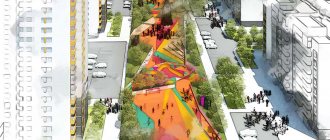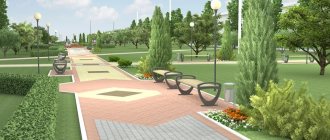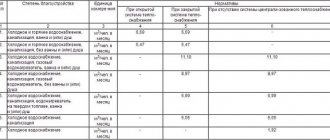01/16/2017 master
In the infrastructure of any city, street lighting plays an important role not only of roads and parks, but also of the local area. It is this lighting that plays an important role in the life of the city to create safe travel conditions.
Lighting of the local area
At the same time, it is local residents who often have questions regarding how correctly their yard lighting was organized and who should monitor it. This and other issues will be discussed in this article.
Why is house lighting necessary?
Creating high-quality lighting in the local area is an important part of the infrastructure of every district of the city. Illumination near the house performs the following tasks, which become necessary with the arrival of evening and night:
- creates sufficient illumination of the roadway, which is located in the courtyard of the house. Thanks to it, all irregularities and features of the road surface, as well as the surrounding area, are clearly visible even at night;
- ensuring good visibility both for vehicles entering parking spaces and for pedestrians who are walking around the yard at this time;
- allows people and vehicles to navigate well in space, which minimizes the risk of injury or accident;
- increases safety in yards, since, according to statistics, robbers do not attack their victims in well-lit areas.
Note! High-quality lighting of the house and the surrounding area can improve the crime situation in the area.
Night yard lighting
But in order for the night lighting of an apartment building and courtyard to perform its assigned functions, it must be organized in a certain way, necessarily based on established standards.
Requirements for the appearance of fencing
According to the rules and regulations, the fence around an apartment building can have a different appearance. Features depend on what object is being fenced, for example:
- if the houses form a closed perimeter or courtyard space, border on dilapidated or emergency housing, it is allowed to install transparent fences no more than 1.6 m high, fencing elements - up to 0.75 m (solid structures are unacceptable);
- for all other types of multi-storey or mid-rise housing, it is allowed to use transparent structures no higher than 0.9 m as a fence;
- sports grounds may be fenced with transparent fences up to 2.5 m;
- fences up to 1.6 m are suitable for playgrounds;
- It is allowed to install a fence up to 2 m high around the dog walking area;
- To limit access to containers with garbage, blind or combined fences up to 1.6 m high are used, and the installation of special canopies is allowed.
The fencing of the courtyard area of an apartment building must be protected from the effects of precipitation. Most often this is done using coloring. The entire fence will have to be treated with protective paint; partial painting is unacceptable.
Courtyard lighting - how to properly illuminate
Any actions that relate to the organization of lighting in a house, on the street or in any public or industrial structure must be based on specific norms, rules and requirements. Many today think that the requirement is relevant only for premises where people do their work or relax. But this is a misconception, since improperly organized street lighting can cause no less harm to people’s lives and health than indoor lighting. All standards that relate to what kind of lighting should be provided for an apartment building and the surrounding area are specified in the regulatory documentation - SNIP. At the same time, a big role here is given to the level of illumination, which must be organized in each specific situation. Below is a table that shows the illumination standards for certain moments of external lighting in the local area.
Standards for illumination of the local area
It is these lighting standards that should be relied upon by organizations involved in the creation of street lighting for houses and the surrounding area.
Note! The illumination standards given in SNIP are advisory in nature and may be slightly modified (but not lower than the established values) when certain parameters change. At the same time, we must strive to ensure that these standards are met as accurately as possible. Indeed, if there is a significant deviation from them, the quality of street lighting will decrease.
At the same time, cities and villages have their own lighting standards, dictated by various parameters and characteristics of the locality. For example, to influence the calculation that will be carried out to calculate the illumination standard for a particular case, it should be based not only on the instructions of SNIP, but also on:
- the area of the house, as well as the territory adjacent to it;
- the number of lighting fixtures that will be included in the outdoor lighting system, as well as their type;
Note! House lighting can be provided by various types of lighting devices: lanterns, spotlights, wall lamps, etc. Moreover, each type of backlight will be characterized by its own technical operating parameters.
House lighting fixtures
- type of light source screwed into street-type lamps. Today, incandescent lamps, on the basis of which illumination standards were calculated for various rooms and areas of the street, are becoming a thing of the past. Instead, LED, halogen and fluorescent light sources are increasingly being used. Each type of light bulb has its own operating parameters (power, etc.), which must be taken into account when making the necessary calculations.
All these manipulations and calculations, which are necessary for high-quality lighting of the house and the surrounding area, must be carried out by qualified specialists and regulated by government agencies responsible for street lighting.
Control methods
When designing street lighting with your own hands, think about how it will turn on/off. The most common and familiar method is manual control. Switches or switches are installed in the house, which are manually turned on or off. This is quite reliable, requires virtually no cost (only for the purchase of a switch, switch) and is often used to turn on decorative lighting. When needed, they turned it on; when they got tired or it was time to sleep, they turned it off.
Do-it-yourself street lighting: first of all, we develop a plan for placing lamps on the territory
But this type of control of security lighting or path lighting is convenient only if someone is constantly in the house (and does not suffer from forgetfulness). If from time to time there is no one in the house, or you have to return from work late, this method of control causes discomfort: the light can only be turned on when it is dark when entering the house (or garage). This problem is solved by automating the switching on/off of street lighting.
To automate the control of external lighting of a private house or cottage, use:
- Time relay.
- Motion sensors.
- Photosensitive sensors (light).
These devices are connected in series. In the normal state, their contacts are open, power is not supplied to the lamps. When triggered, the contacts close and supply power to the lighting fixtures.
The installation location depends on the operating principle. Light and motion sensors are installed on the street, usually close to lamps, but it is more appropriate to install time relays in the house.
Connection diagram for time relay and light sensor (photo relay)
What devices are best to use? Depends on the type of outdoor lighting. For example, on a driveway it is worth installing both motion and light sensors. Light-sensitive sensors will work when dusk comes, but the light will not appear until a moving object (car) appears in the coverage area. To prevent the lighting from turning off as soon as the car drives away, the motion sensor must have a shutdown delay. Convenient and economical, but not without drawbacks. The disadvantage is that incorrectly configured sensors can turn on the light “unauthorized”. Sometimes this happens in cloudy weather, sometimes dogs, cats and even birds are mistaken for a car or a person.
The lighting of paths and stairs can be turned on according to the same principle, or you can install a time relay. But this option is not very convenient, since the settings have to be changed periodically - with each change of season, or even more often. When developing street lighting with your own hands, think about ways to turn it on/off so that you don’t have to redo it later.
Responsible for light
If the relevant documentation is responsible for the norms and rules for organizing street lighting, then people who work in government agencies are fully responsible for their implementation. In addition to SNIP, documents of federal, regional or local significance may contain standards for illumination levels and various additional recommendations. For example, in the Russian Federation, Federal Law No. 131-FZ of October 6, 2003 (as amended on July 21, 2007) was adopted, which assigns the responsibility of the authorities for the creation of street lighting on the territory of the municipality. According to this law, as well as a number of other legislative documents, local authorities must monitor not only the proper organization of street lighting, but also the maintenance of the system in working order.
Home lighting
In fact, the external lighting of the building area should be monitored by the state housing and communal services service (its individual divisions), as well as divisions of energy companies to implement the technical aspects of street lighting. The territorial administration must pay for their work. Other organizations with which an appropriate agreement has been concluded, or companies whose balance sheet includes the engineering system of a particular settlement, may also be responsible for street lighting of houses and adjacent territories. It is these organizations that determine the following parameters for street lighting in the local area:
- duration of operation of lighting devices at night;
- the number of lights that will be installed near the house and the surrounding area;
- What time will the lights turn on?
Therefore, if for some reason there is no lighting on the street, you need to contact the above-mentioned organizations and companies, which will be different for each individual area of the settlement. Of course, the question “where to go or complain if there is no light in the yard of the house” can be answered in different ways. After all, each division will be responsible only for a certain area of the organization of the street lighting system. For example, the city district administration is responsible for the lighting schedule in the evening and night hours, according to Article 16. But the responsibility for maintaining the lighting system usually rests with the owners of buildings.
Features of the territory
Arrangement of the yard of the house begins with an inspection of the territory. The homeowner must decide what first of all he wants to see on his site
After this, they seek the help of specialists who will conduct the necessary analysis of the specific situation, tell you what to look for and help with site planning. Share your thoughts with them, tell them the plan in great detail, and then listen to their opinions. Experts, having assessed the situation, make adjustments, add or remove items
Experts, having assessed the situation, make adjustments, add or remove points.
There are criteria that should be thought through in advance:
- Presence of pets. If a dog will live in the yard, then you need to designate a place and present a booth. Answer the question: will she walk freely around the territory or should a section be allocated;
- Indoor or outdoor yard. If you plan to park a car in the yard, then it is advisable that it be located in a place protected from weather conditions;
- Will there be a place on the site for crops or is it intended for recreation?
The yard and the house should look harmonious. The design of the site is arranged in accordance with the construction.
Who receives complaints
If a malfunction of the lighting system of the house and the surrounding area has been noticed (for example, there is no light at night and in the evening, one lamp is faulty, etc.), you must contact the appropriate institution with a complaint or statement.
Proper yard lighting
But, since it is not always clear where to go, you need to contact your housing and communal services department in order to find out more detailed information about those responsible.
Note! Every resident of any locality has the right to know how the budget is spent, what funds are allocated to support street lighting of houses and surrounding areas, and other issues related to such lighting.
To change the situation when there is no light in the yard, you need to do the following manipulations:
- write a written application;
- contact your local executive authority.
After these steps, the organization that accepted the application must take a number of appropriate actions depending on the reason for the submission of the document by a resident of the area:
- send a repair team to find out the cause of a particular situation (no light, various system breakdowns);
- within the time frame specified by the local executive authority, repair work must be carried out to eliminate the identified violations.
If this organization does not carry out the above-described manipulations, then it must answer the following questions:
- who manages lighting maintenance in the specified territory;
- who acts as the customer under the concluded contract for maintenance of the lighting system;
- Which organization is assigned to maintain lighting in a specific location?
This information will allow you to competently and correctly draw up a complaint and submit it to the right organization. If there is no response to the submitted complaint, then it is necessary to submit it to a higher executive body.
Features of privatization:
| Apartment buildings | Low-rise buildings | Private houses | |
| Who is the owner | The owners of the adjacent territory of an apartment building are all residents on the right of shared ownership | Residents with apartments on the lower floors of the building | Owners of private houses or unfinished buildings on municipal land |
| Who can privatize | The land registration is carried out by the developer - a construction organization responsible for putting the house into operation. The privatized area immediately becomes the shared ownership of the residents. The basic principle: the purchased apartment in a new building includes a share in the adjacent territory of the apartment building. If the building was built before the Housing Code of the Russian Federation came into force, and the land belongs to the municipality, the initiator of privatization is the residents themselves | Residents of a low-rise building have the right to privatization if they want to use the land for their needs (creating vegetable beds, planting flowers, fruit trees, erecting a fence, building storage rooms, sheds, etc.) | The owners of the building have the right to privatize the local area of a private house. Usually they receive land for individual construction (IHC). In addition, you can obtain land for rent (for example, for 20-30 years). Subsequently, the site is transferred into ownership free of charge |
| Peculiarities | — The boundaries of the local area are entered in the cadastral passport, and in the absence of a document, in the technical plan of the house. — An application for privatization of a plot is submitted on behalf of all owners of apartments in the apartment building. However, applications from individual initiative groups and even from one person are allowed. After registration, they will be able to count on a share in the calculation of their square meters. — Maintenance of the land of an apartment building is entrusted to the residents, who delegate the powers to the HOA or the Management Company. — Privatized real estate is subject to property tax. The territory is used at the discretion of the residents of the apartment building. | — The adjacent territory of a low-rise building should not create obstacles to the free passage of people and the passage of vehicles. — Plot owners have the right to compensation in the event of alienation of land by local authorities. — The territory can be used for commercial lease. — Information about the site is entered into the cadastral passport, and is also reflected in the technical passport for the low-rise building. | — The owner must provide a title document (deed of permanent transfer of local land, agreement to join a gardening partnership, membership book, lease agreement, etc.). — It is prohibited to privatize lands classified as forest, water or protected areas, public places, as well as plots of limited circulation (Article 27 of the Land Code of the Russian Federation). — Paid and free privatization of a plot for a private house is allowed. — Information about the local area is recorded in the cadastral passport for the land (extract from the Unified State Register of Real Estate). If you don’t have a passport, you will need to request an archival extract from Rosreestr. |
Options for organizing courtyard lighting
Today, lighting of the local area can be done in several ways. The first option for organizing courtyard lighting involves placing a wall lamp above the entrance canopy.
Entrance lighting
Any type of lamp, as well as light source (LED, fluorescent, etc.) can be used here. Recently, economical light sources have begun to be used for these purposes, which allow saving energy, which is very important for this type of lighting. This lighting option allows you to illuminate only the area in front of the entrance. Therefore it is rarely used. Usually it comes in combination with other lighting options. The second option for lighting the yard involves placing a wall-mounted street lamp above the canopy at approximately a height of 8.5 meters from ground level.
Second lighting option
In this case, the lamps should be located at an angle of 25 degrees to the horizon. This lighting option provides a much larger area of illumination for the yard, which will cover not only the area in front of the entrance, but part of the roadway. The third option for courtyard lighting. It involves the use of both types of lighting devices described in the previous versions.
Third option for courtyard lighting
In addition, floor lamps are used to illuminate the local area. The distance between them is also regulated by regulatory documents, as are lighting standards. With the help of such lighting devices placed along the road, you can provide high-quality illumination of the roadway, as well as playgrounds and parking lots located in the courtyard of an apartment building.
Yard lighting with lanterns
The most effective way to illuminate the local area is to use both lanterns and lamps placed above the entrance door to the entrance.
Purpose of lanterns
Judicial practice in bankruptcy of individuals: whose side is the court on?
The installation location of lamps in the yard is determined by the need to illuminate a particular area: the entrance, garden path, flower bed or pond. Depending on the tasks assigned, yard lighting devices can be divided into several categories.
Functional
The main task of functional lighting is to provide sufficient visibility in any area. Thanks to this type of lighting in the yard, you can ensure safe movement after dark.
Various types of lighting equipment can be installed for street lighting:
- Lamps and spotlights installed on the facade of a building or free-standing supports help illuminate garden areas, local areas, etc.
- Landscape street lights - characterized by low legs or direct installation in the ground, provide visibility of paths of buildings and structures in the yard.
- Floor lamps for street lighting are located at human height and are designed to illuminate a small area around, roads, driveways, entrances, gardens and other elements.
In addition to a powerful luminous flux, functional lighting must also ensure minimal energy consumption, so it is worth using LED lights here.
Security
Designed solely to prevent unauthorized entry of strangers into or near the yard. Used to illuminate any area of your home, space, area, etc. Constantly switching on the light at the entrance gate, fence or generally around the perimeter provides good visibility, but this is too expensive. Therefore, it is advisable to automate security lighting using a motion sensor, so that the lighting devices act as an alarm system, notifying that a person is approaching.
Festive
Festive courtyard lighting is intended to decorate the area for a specific event - New Year, birthday, etc. Unlike the previous type, they are installed temporarily - in relation to some holiday. Here you can also use architectural lighting, lighting paths, decorating gazebos and terraces. Garlands, LED strips and themed lamps are used as courtyard lighting devices.







